
The Talking Heads said it best: “Air can hurt you, too.” And it does it in so many ways. It can hurt your pocketbook. It can make you uncomfortable. It can make you sweat. It can make you sick. And, if you believe the Talking Heads, “It can break your heart.” So let’s look at a few of the stupid things you can do with air to make it hurt you.
1. Using crawlspace air to cool the house
My friends at E3 Innovate in Nashville have encountered many stupid things done with air, and this one is a classic. In one of the homes they improved, they found that someone had rigged up a fan with some ductwork in an attempt to cool the house.
I wrote an article about this “innovation” in 2016. The biggest problem here is indoor air quality. A vented crawlspace in the Southeast is often the nastiest part of a house. And in this case, there was something to make it especially nasty.
Yeah, they did put a filter on that intake, but that’s far from enough to make that air worth bringing into the house. The other big problem is that along with that slightly cooler air, you’re bringing a lot of humidity into the house.
Definitely not worth it!
2. Using attic air to ventilate the house
In a similar vein, someone in Atlanta decided to use air from a dirty, vented attic to ventilate their home. (I hear this is fairly common in Australia and New Zealand, too.) The photo below shows how they did it.
![A hole in the return plenum pulls in air from a vented attic for "fresh air" [Photo courtesy of Bruce Kitchell]](https://www.energyvanguard.com/wp-content/uploads/2016/11/filter-over-plenum-hole-ventilation-air-intake.jpg)
Again, really stupid idea. What are the problems?
- Super hot air getting pulled into the system in summer, possibly overwhelming the cooling capacity of the air conditioner
- Bypass around the filter
- An inefficient filter in this case
Read the article I wrote on this for more.
3. Venting dryer exhaust into the house
In theory, this is a nice idea. Your home needs heat (and maybe humidity) in winter, so why send all that dryer exhaust to the outdoors, right? I stayed in a rental condo in North Carolina recently where they had done this. Here’s what it looked like.
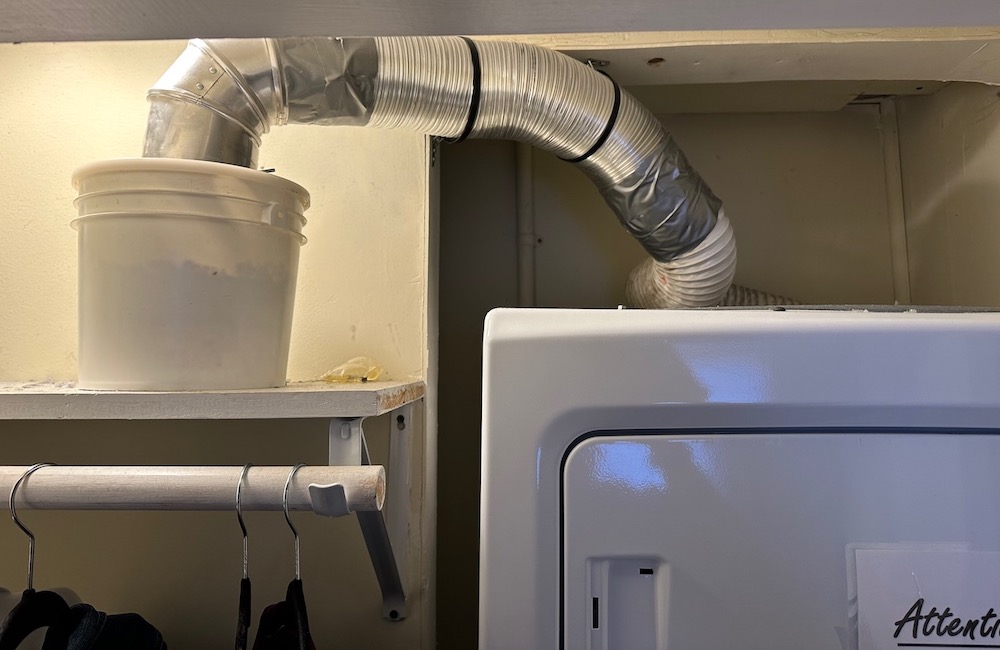
And of course, you’re wondering what the bucket looks like so I got that photo, too.
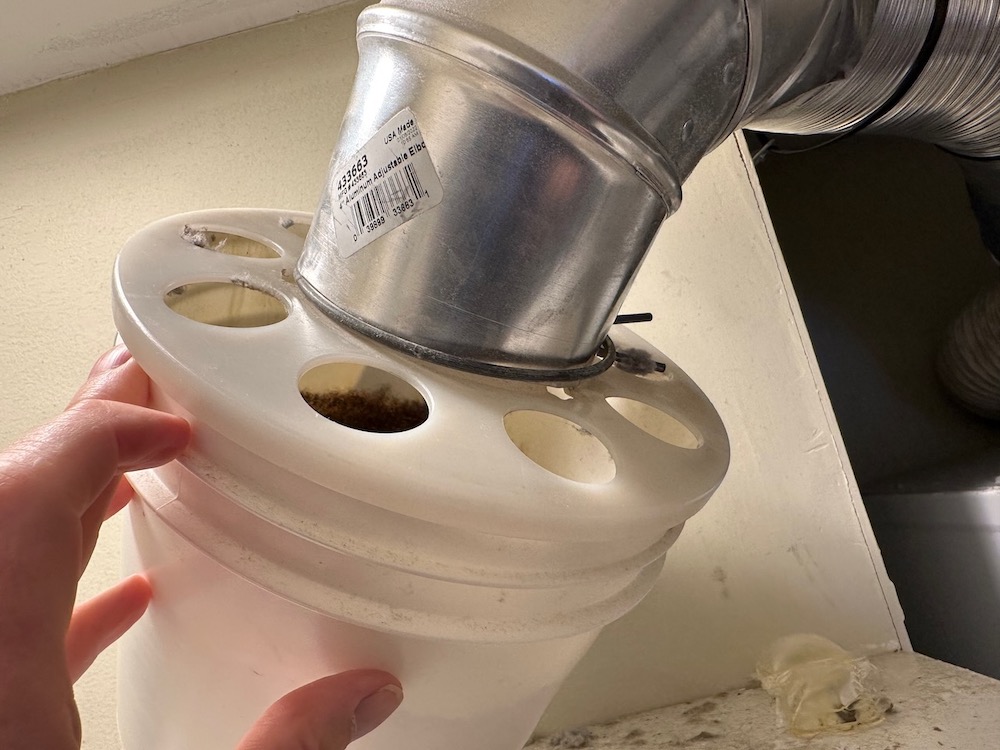
Here are a few problems.
- YOU SHOULD NEVER EXHAUST A GAS DRYER TO THE INDOORS. I don’t do all-caps very often, but this point deserves extra emphasis. The combustion gases for a gas dryer go out the same vent as the warm humid air, so you don’t want to send all those pollutants to the indoors. (Our rental condo had an electric dryer.)
- With no filtration, a lot of lint gets out into the laundry room and beyond.
- With filtration, you may be putting the dryer vent under too much pressure to keep the airflow up. Low airflow can cause the dryer to run longer.
- Low airflow and lint buildup in the dryer vent can cause a fire.
- In this condo, there was no alternate venting route. That room can get too warm when you run the dryer in summer.
Yeah, you can buy products online that let you send that dryer exhaust indoors. Yeah, engineers and other technical types sometimes rig up their own systems. And yeah, if you’re careful and diligent in your maintenance, this can put heat and humidity back into your home’s air. Engineer David Schurk did it at his house and said about it: “I didn’t feel the juice was worth the squeeze, and I was having to clean the filter every few days, so after one winter season I abandoned it.”
So this isn’t a completely stupid thing to do with air, but you gotta know what you’re doing. Check out the comments on my LinkedIn post on this topic for more.
4. Venting the refrigerator to the attic
When I was working on my in-laws’ house 15 years ago, I found a dark spot in the insulation when I was crawling around the attic. When I pulled it back, I found a hole that was about two thirds of a square foot (0.06 m2). The photo below shows only about half of it, with another hole on the other side of the joist.
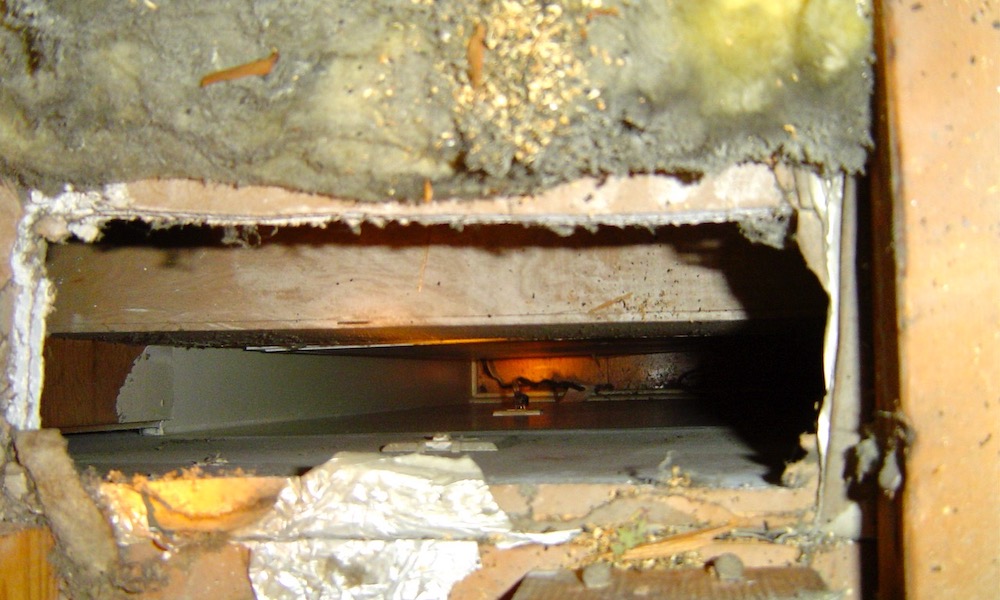
Peering down into the hole, I saw a cord plugged into the wall and realized I was looking at the back of the refrigerator. So not only did this hole in the ceiling allow a lot of warm air from the house to leak into the attic, but it got an assist with the extra heat from the fridge. That caused it to leak more than if it were in another part of the ceiling.
Just don’t.
5. Dehumidifying a vented crawlspace (or basement)
A dehumidifier is a handy piece of equipment to have when you need one. But giving it a Herculean task is silly. I’ve been in a number of vented crawlspaces and basements where a dehumidifier valiantly tries to dehumidify that space. That photo below shows one of them.
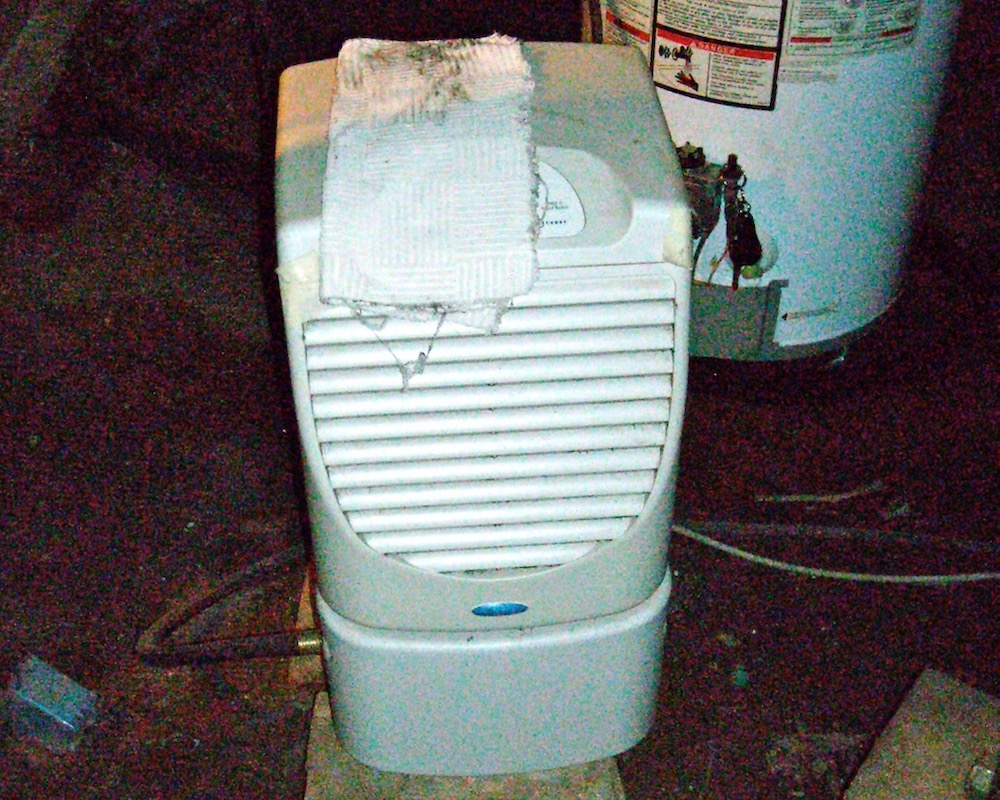
As I’ve said before, you can’t dehumidify your whole neighborhood or city. And yet people keep trying to this stupid thing with the air. Turn off that dehumidifier!
6. Conditioning your garage with the home’s ducted system
Another really stupid thing to do with air that can make you sick is to put a supply vent (or two or three) from your main heating and cooling system in the garage. You’d never put a return vent in the garage because you don’t want to suck that polluted air in and distribute it to the house, right?
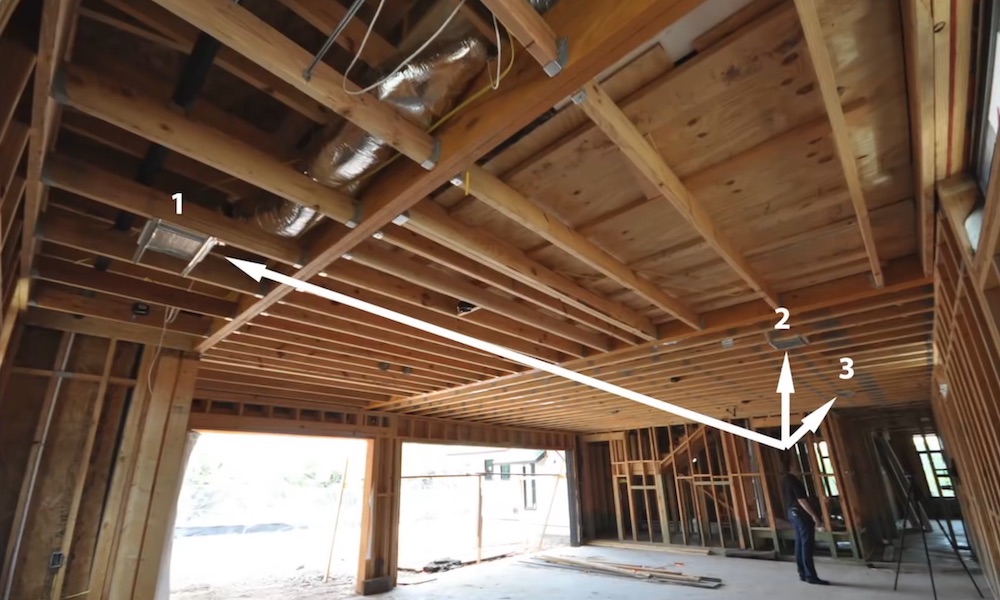
As it turns out, putting a supply vent in the garage has pretty much the same effect as putting a return vent there. Why? Because when you pressurize the garage with supply air, you depressurize the house. That pressure difference sends polluted garage air into the house.
See my article on that topic, which includes an early Matt Risinger video.
7. Letting duct leakage and filter bypass ruin your indoor air quality
Duct leakage and filter bypass allow all kinds of dust and pollutants (like skin flakes) to go through your duct system. Some of those pollutants will go right through ducts and air handler and be distributed into your indoor air. If all your ducts are in conditioned space, there’s no net gain of indoor pollutants, right?
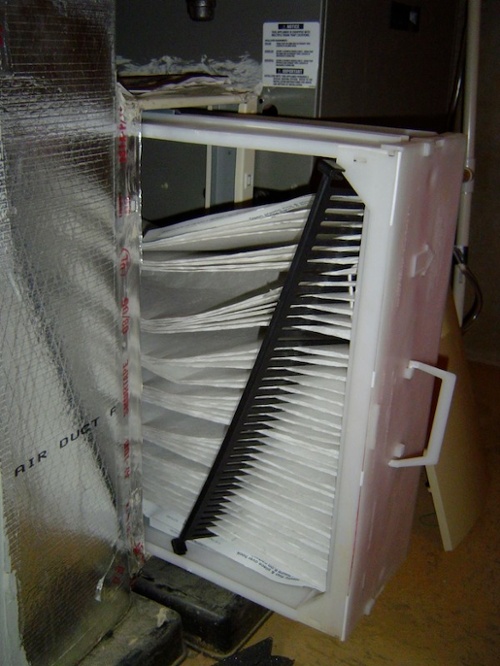
Probably not. When the coil is wet, that junk sticks to it. You can get nasty microbial growth on the coil and in the drain pan. That stuff can get into your indoor air, compounding the indoor air quality problem. Plus, it diminishes your system efficiency and durability, costing you more money.
To make things even worse, put your ducts in a nasty crawlspace, polluted garage, or dirty attic.
Don’t do stupid things
It would be disrespectful of me to end this article on stupid things you can do with air and not mention the master of stupid things. Yes, I’m talking about Joseph Lstiburek, PhD, PE. He’s made a career of brilliantly pointing out how most of our problems with buildings result from doing stupid things. If you don’t already, you should subscribe to his newsletter and read his articles religiously if you want to understand building science.
But stupid things aren’t all he writes about. Sometimes he writes about dumb things, as he did in Top Ten Dumb Things To Do In the South.
Now, back to the topic of the day here. Are you doing stupid things with the air in your house? If so, you may be singing those Talking Heads lines:
What is happening to my skin?Where is that protection that I needed?Air can hurt you tooAir can hurt you too
So my advice is to listen to Dr. Joe: Don’t do stupid things!
________________________________________________________________________
Allison A. Bailes III, PhD is a speaker, writer, building science consultant, and the founder of Energy Vanguard in Decatur, Georgia. He has a doctorate in physics and is the author of a bestselling book on building science. He also writes the Energy Vanguard Blog. For more updates, you can subscribe to Energy Vanguard’s weekly newsletter and follow him on LinkedIn. Photos courtesy of author, except where noted.
Weekly Newsletter
Get building science and energy efficiency advice, plus special offers, in your inbox.






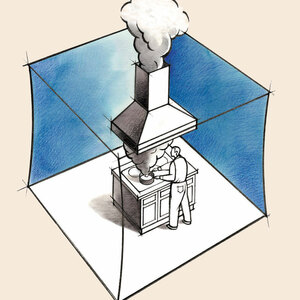

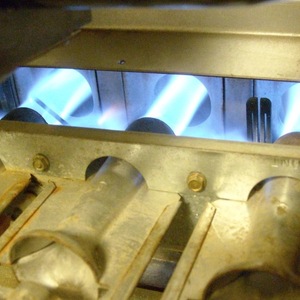






6 Comments
You forgot ground vents — running ductwork underground to get “free” cooling.
Yeah, that's another one. Thanks, Bill.
Allison,
Good blog!
Beyond them being stupid, most are precluded by the building codes I'm familiar with. Before contemplating any idea you come up with, finding out what codes allow or require is the best place to start.
Malcolm: Yeah, checking the code is a good starting place. Most of the stuff I mentioned above was done outside the code process and never got an inspection, but just knowing the code can help.
Appreciate your thoughts on whether a heat-pump clothes dryer needs ventilation in the room. The manufacturer states: "The hot air that is blown out from the heat exchanger warms the room air. Ensure sufficient ventilation of the
room: e.g., open the window. The drying time will otherwise take longer (higher energy requirement)." How much of an issue is this? Thx.
Here in northern Ontario, I commonly see ducts running from the house (usually grills in the main floor hall ceiling and somewhere in the basement ceiling) to a manifold mounted, in the attic, under a turbine vent (photo attached). Ventilation rate governed by wind speed. Why not?
Log in or create an account to post a comment.
Sign up Log in